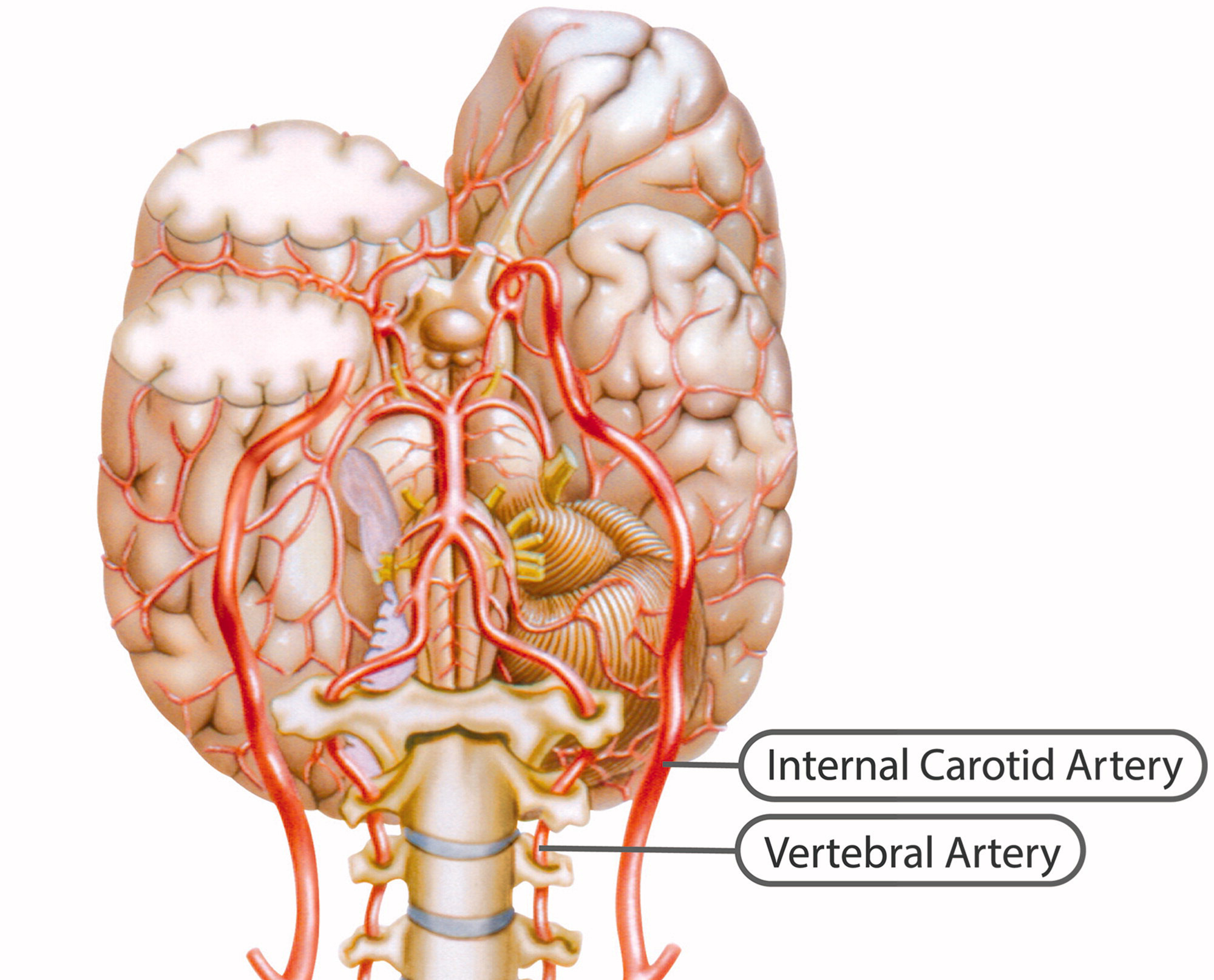Chiropractic Response to a Spontaneous Vertebral Artery Dissection
SOURCE: J Chiro Med 2015 (Sep); 14 (3): 183–190 ~ FULL TEXT
Gary Tarola, DC, and Reed B. Phillips, DC
Private Practice,
Lehigh Valley Medical Network,
Allentown, PA.
OBJECTIVE: The purpose of this case report is to describe a case in which early detection and proper follow-up of spontaneous vertebral artery dissection led to satisfactory outcomes.
CLINICAL FEATURES: A 34-year old white woman reported to a chiropractic clinic with a constant burning pain at the right side of her neck and shoulder with a limited ability to turn her head from side to side, periods of blurred vision, and muffled hearing. Dizziness, visual and auditory disturbances, and balance difficulty abated within 1 hour of onset and were not present at the time of evaluation. A pain drawing indicated burning pain in the suboccipital area, neck, and upper shoulder on the right and a pins and needles sensation on the dorsal surface of both forearms. Turning her head from side-to-side aggravated the pain, and the application of heat brought temporary relief. The Neck Disability Index score of 44 placed the patient’s pain in the most severe category.
INTERVENTION AND OUTCOME: The patient was not treated on the initial visit but was advised of the possibility of a vertebral artery or carotid artery dissection and was recommended to the emergency department for immediate evaluation. The patient declined but later was convinced by her chiropractor to present to the emergency department. A magnetic resonance angiogram of the neck and carotid arteries was performed showing that the left vertebral artery was hypoplastic and appeared to terminate at the left posterior inferior cerebellar artery. There was an abrupt moderately long segment of narrowing involving the right vertebral artery beginning near the junction of the V1 and V2 segments. The radiologist noted a concern regarding right vertebral artery dissection. Symptoms resolved and the patient was cleared of any medications but advised that if symptoms reoccurred she was to go for emergency care immediately.
There are more articles like this @ our:
CONCLUSION: Recognition and rapid response by the chiropractic physician provided the optimum outcome for this particular patient.
KEYWORDS: Adverse effects; Chiropractic; Manipulation; Stroke; Vertebral artery dissection; spinal
From the FULL TEXT Article:
Introduction
Stroke was the fifth leading cause of death in the United States in 2013. [1] Most vascular diseases, including stroke, “share common risk factors (high blood pressure, diabetes, dyslipidemia, and obesity), which can be influenced by modifiable health behaviors such as unhealthy diet, smoking, lack of physical activity, and stress.” [2] The disruption of blood flow to the brain is also affected by anatomical variations and anomalies, disruption of the arterial intimal lining in the carotid and/or vertebral arteries, and disease resulting in coagulation issues and/or the obstruction of normal hemodynamics. (See Figures 1–7)
Read the rest of this Full Text article now!



Leave A Comment